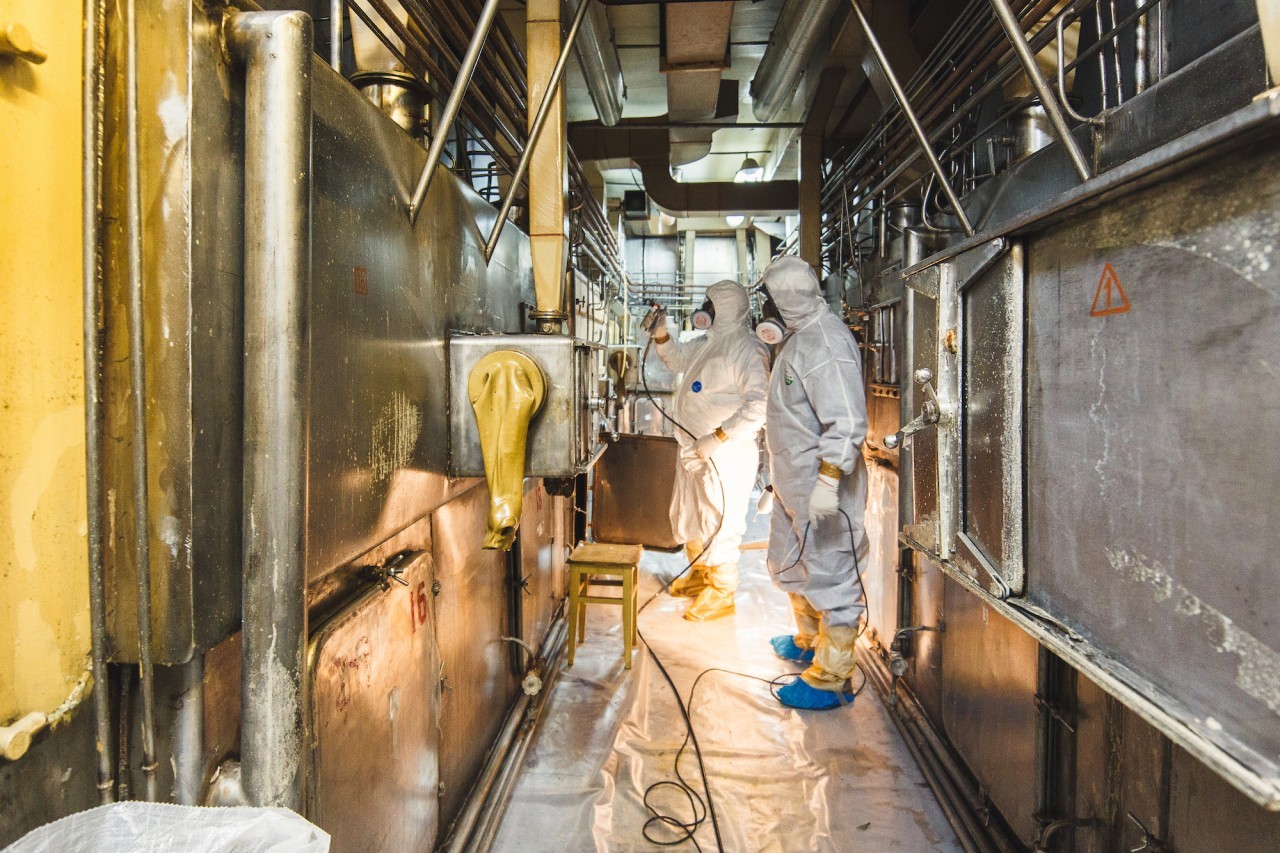 Researchers at Russia’s AA Bochvar Research Institute of Inorganic Materials (VNIINM - part of TVEL) have completed R&D on the development of an integrated technology for foam decontamination and protection of radioactively contaminated facilities. Foam decontamination is used at various stages during the life cycle of a nuclear facility – in operation and in decommissioning – and by selecting the optimal foam composition it can solve several problems.
Researchers at Russia’s AA Bochvar Research Institute of Inorganic Materials (VNIINM - part of TVEL) have completed R&D on the development of an integrated technology for foam decontamination and protection of radioactively contaminated facilities. Foam decontamination is used at various stages during the life cycle of a nuclear facility – in operation and in decommissioning – and by selecting the optimal foam composition it can solve several problems.
Foam decontamination provides effective removal of radioactive contaminants buried in underlying damaged metal layers of equipment and completely removes surface metal layers of the required thickness. This is usually undertaken at facilities that are expected to return to operation and where the work ends with dismantling of the facility and return of the site to a green-lawn or brown-lawn state.
In other conditions, the foam can have a mild, more controlled effect on the structures and materials being processed so that the corrosive and destructive effect of foam compounds on communications and equipment is minimal. In these cases, use of the foam technology does not require the equipment to be dismantled.
The uniqueness of this complex technology lies rests on the wide range of developed foam compositions investigated by VNIINM scientists for surface treatment. During laboratory research and experimentation, three types of foam were developed - dense, voluminous and localising.
Dense foam is used for decontamination on horizontal and vertical surfaces, as well as on surfaces of complex geometry. Bulk foam is designed for decontamination of bulk equipment using the filling method. After the polymer hardens, the localizing foam forms a dense protective film that retains radioactive contamination. The specialists have proven the high efficiency and manufacturability of the use of foams on horizontal and vertical surfaces of stainless steel, carbon steel, plastic compound and painted concrete.
“The integrated technology of foam decontamination makes it possible to reduce the cost of conditioning and storage of secondary radwaste,” explained Alexander Dunilin, Director of Decommissioning at VNIINM’s Nuclear & Radiation Department. “It ensures high efficiency in the use of decontamination agents, and also minimises the costs of maintaining safe conditions during the decontamination process.”
Tests of the developed foam compositions and the system for applying them as well as subsequent collection and disposal of decontaminants were carried out at the production sites of VNIINM and the Siberian Group of Chemical Enterprises (also part of the TVEL).
“The foam compositions, tested on real radioactively contaminated objects, showed the maximum possible decontamination for various surfaces of components and equipment with complex geometry,” said Dmitry Semenov, Head of the Department for Scientific & Technical Activities for Decommissioning Nuclear & Radiation Hazardous Facilities at TVEL. “The complex technology of foam decontamination can be used to solve a wide range of problems during the operation and decommissioning of nuclear facilities.” The technology makes possible the mechanised collection of secondary waste generated during processing, volume reduction and preparation for final disposal.
Image courtesy of Rosatom



